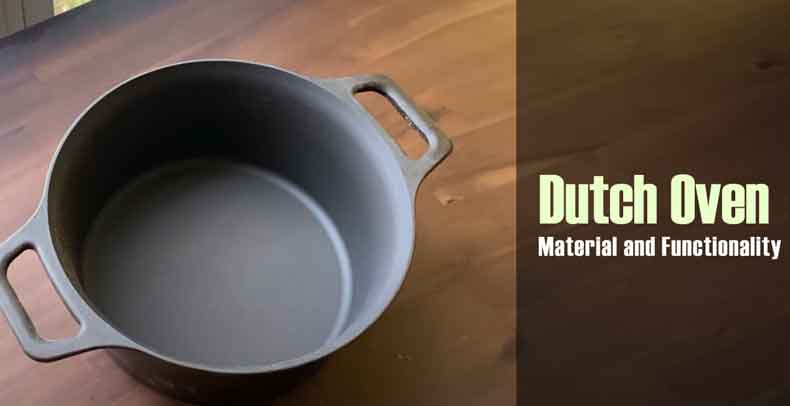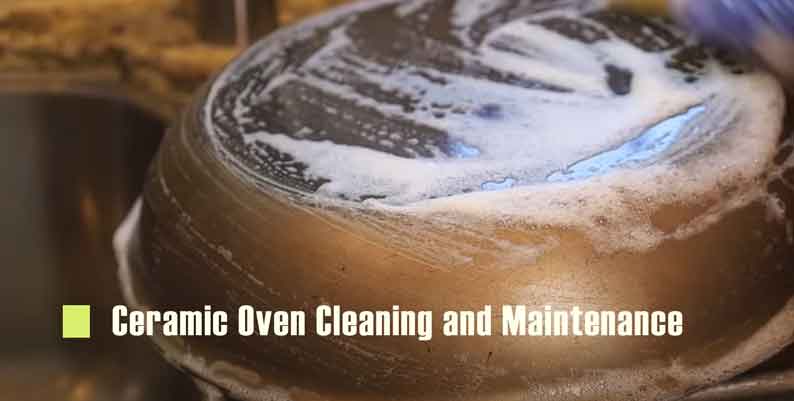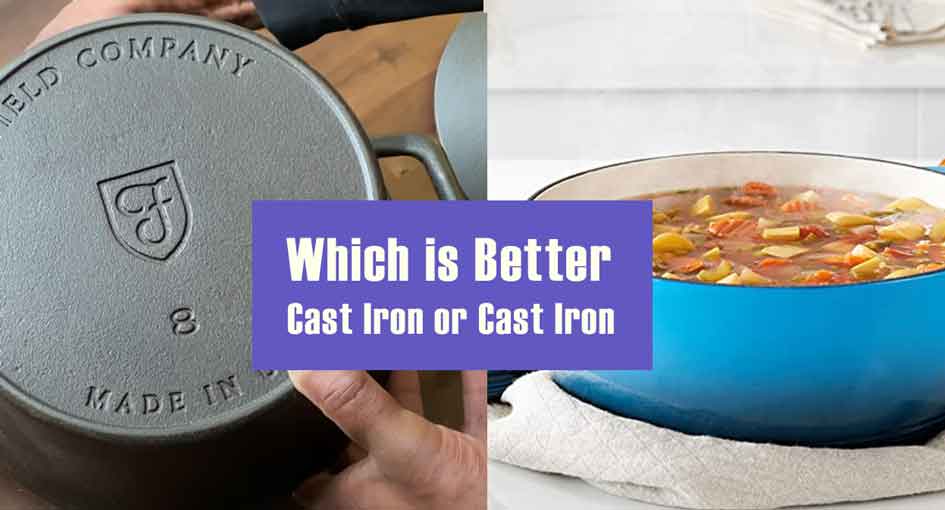Ceramic dutch and cast iron ovens are used for cooking a delicious meal. They are perfect for everything from slow cooking to searing meat. They are both easy to use, but you should know their differences to decide which is best for you.
Dutch ovens are vintage ovens that cast so long even if you can use your mom’s oven for a long time. But the durability of ceramic and cast iron are not the same. There is something more that is not the same between them.

Comparison Between Cast Iron and Ceramic Dutch Oven
There are a few differences in built materials, functionalities, and uses between a cast iron and a ceramic dutch oven. Check them out in the following section to understand which one of them you will buy:
Material
Cast iron dutch ovens are made of heavy-duty cast iron. It is heavier and can retain heat longer than the ceramic dutch oven. The cast iron oven surface is nonstick, heavy, and likely to rust. Ceramic dutch ovens are fragile and should be handled carefully; they are made of ceramic and sand particles. They are not heavier like cast iron ad easy to handle.
Durability
Cast iron is highly durable and can last long if you care for it properly. Ceramics is also durable but more fragile when it drops or changes in temperature. But with proper maintenance, it can last up to 5 to 10 years.
Functionality
Cast iron is a vintage oven, so it may not seem easy for beginners to use. Cast iron uses slow temperature for cooking, so it takes longer with different chicken recipes and meat ones too. You cannot just increase the temperature or lower it to cook food; it can damage the oven and ruin your food.

The cooking process is accessible in a ceramic dutch oven. You can adjust the temperature manually, so there is no food or oven damage option.
Heat Retention
Cast iron has robust heat retention quality. It can be boiling for a long time and can heat up quickly. You can keep your food warm for a long.
A ceramic dutch oven does not have these features. It takes a longer time to heat up. The surface is nearly nonstick, so cleaning should be done carefully.
Weight
Ceramic dutch is lighter than cast iron. They are made of clay and sand particles, so the weight is lower. Cast iron ovens are heavy, which can be both an advantage and a disadvantage. They are challenging to handle and carry, especially when full of food.
Cleaning and Maintenance
Both dutch ovens require some maintenance to keep them in good condition. Cast iron must be cleaned regularly to prevent rust and maintain its nonstick surface, while ceramic oven needs to be cleaned and seasoned.
After cleaning, you need to dry the cast iron thoroughly because it gets rusted easily. Also, you cannot just soak them in water and clean them; there are some specific rules to clean cast iron.

Ceramic does not rust, so cleaning this cookware is easy. All you have to do is, wipe the oven with warm soapy water and a clean cloth.
Price
Ceramic dutch ovens are cheaper than the cast iron oven. But if you need durability, cast iron should be your best bet. Also, they have more options available in the market.
Is Cast Iron Better than Ceramic?
Ceramic ovens are not up to the mark if you need durability, as they break easily. However, cast iron is not highly durable but can last long. It could be your lifetime investment.
Cast iron can be used in all heat sources, so it is versatile. The ceramic oven is not versatile as it cannot use on a regular stove.
Which is Better, Cast Iron or Enameled Cast Iron?
Both types of ovens have their advantages and disadvantages.

Traditional cast iron ovens are durable, nonstick, and excellent at retaining heat, so they are great for searing and baking. They require seasoning to prevent rust and maintain their nonstick properties, and they can react with acidic foods and cause a metallic taste.
Enameled cast iron ovens to have a smooth, non-reactive surface that is easy to clean and doesn’t require seasoning. The enamel coating also provides an additional layer of protection against rust. Enameled cast iron ovens are great for cooking acidic foods, braising, and simmering.
